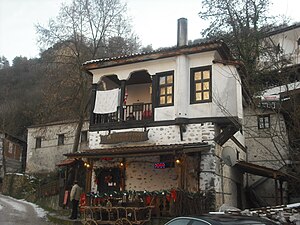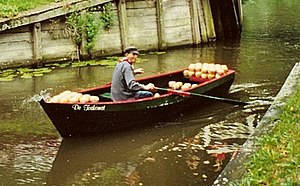Don’t worry, this isn’t a “death of” article. I’m simply giving notice that the phrase “traditional media” really isn’t very useful. Sure it’s handy as a shorthand way of referencing print, TV and radio. But in the long run, I think the phrase “traditional media” does more harm than good; both digital and real world media would be better were the phrase retired.
In a hurry? Jeff Turner has kindly identified the pullquote : “Continuing to think in terms of “traditional” and “digital” allows one group to feel tired and old while the other group gets to feel fresh and new. Both groups, however, are lulling themselves into a slumber which disconnects them from meaningful work.”
It isn’t “traditional” anyway
The word “traditional” is neither an accurate nor useful description of newspapers, magazines, radio and television. While newspapers have existed in some form or another since the 1600s, advertising as we know it didn’t really take off until the 1850s. The New York Ledger ran the first full-page ad in 1856. Radio and television as popular media channels are less than 100 years old.

These things haven’t been around long enough to really be a deeply embedded tradition in our culture. Storytelling expressed through text, sound and drama have of course been around for some time and are traditional aspects of culture. But the media which contains storytelling and drama changes.
Two or three generations of human behavior doesn’t result in a strong tradition. Further evidence of this can be found in how quickly the demise of the newspaper industry is progressing.

If consuming newspapers, radio and TV is a tradition, whose tradition is it? What do these people have in common? Are they a complete society? Do members of various ages, genders, life stations and status participate in the tradition? Or is the society participating in traditional media fragmented, disjointed and demographically challenged?
Traditional media really isn’t a tradition. Continuing to call print/radio/television traditional media isn’t accurate.
“Traditional media” isn’t a helpful term anyway
Since participation in “traditional media” isn’t a tradition we’re taking up time and space to perpetuate a myth. Using “traditional” as a description, in addition to being inaccurate, doesn’t make anything clearer for anyone. It just wastes pixels and ink.

People aren’t likely to use several adjectives in a media description because, frankly, we’re lazy and would rather accomplish the task with more elegance. That’s why we don’t say “print, radio and television” and started using “traditional media” in the first place.
The word “tradition” is occupying space that could be put to better descriptive use.
There is something besides an imaginary tradition that print, television and radio share. But as long as we’re satisfied to call them “traditional” media we’re preventing that something from being known. Which is a shame. Because even if our participation in “traditional media” were a tradition, I don’t think the most salient feature of these content-bearing forms would be whatever imaginary tradition we would be performing.
“Traditional media” lets digital media off the hook too easy.
Setting categories for media based on how recently they’ve been established might be useful for historians. But it isn’t that useful for practitioners or users (importance of understanding history notwithstanding).
By framing our content-delivery options as traditional vs digital we’re making a number of mistakes. The biggest of them is that we allow all digital formats to appear shiny and new when many of the underlying principles are really not very different from a full page ad being run in a newspaper (in 1856).

What, really, is the difference between running an ad on Facebook and running an ad in Make Magazine? Other than the likelihood that more people will actually see the ad in Make Magazine? There really isn’t that much of a difference.
Sure, Facebook itself is different from Make Magazine. Facebook facilitates communication between two people and Make Magazine facilitates communication from one person to many people. But the business model centered around advertising is essentially the same thing. And the nature of that advertising and how we use it is essentially the same as well.

By calling Make Magazine “traditional media” and calling Facebook “digital media” or even “social media” we are making two things that are essentially the same appear to be two completely different things. How this impacts our decisions depends on our emotional attachment to “tradition,” “digital” and, if we’re jaded, “social media.”
But regardless of our emotions, the process by which Facebook and Make Magazine continue to operate is the same. Using two different phrases with two different collections of emotional baggage to describe the same thing isn’t helpful.
The real shift in media landscape
Part of the issue here is that there is an honest difference between the organizations that produce and distribute the content we consume pre and post digital revolution. Our use of phrases like “traditional media” and “new media” are a little bit useful in noting that yes, something changed.
The thing that changed, however, wasn’t really the business model. It was the nature of the content production or business operation itself. It was simply the creation of a new channel into which the same business model–advertising–could be injected.
Before the 90s a business owner could inject an advertising message into content that was produced by a team of professionals which was then distributed to people through other people handing stuff around, the airwaves or wires in which signals moved in one direction.

After the 90s a business owner could also inject advertising into content that was produced by the people formerly known as the audience. An array of amateur content, personal content, tools/utilities, communication messages and games became available for businesses to surround with advertising.
In addition, the nature of web technologies enabled advertising to encompass a fairly arbitrary mix of text, image, video and audio. The advertising units in this “new” media were far less rigid than they were in “traditional” media.
The real change was the divorce of advertising from a fixed format channel. Advertising could now be attached to a wide variety of content formats.
Beyond the skeuomorphic digital formats which, like their real world counterparts, carry content in narrative form–newspaper articles turning into digital newspaper articles, television dramas turning into webisodes, talk radio turning into podcasts and so on–there were new non-narrative formats.
This includes tools like search engines. It would be like placing advertising such that every time you picked up a hammer you would receive an advertisement for nails.
This includes tools like communications platforms. It would be like placing advertising such that every time you talked about an iPad with your friend you received an advertisement for tablet computers.

As digital tools escape the deskbox and land in our pocketbox we gain access to new tools like maps. It would be like receiving notification of all of the restaurants within a quarter mile of where you’re standing.
“New” media brought us new mixed media advertising formats. “New” media brought us new tool-based advertising channels. But it didn’t bring us “new” business models.
It’s the same business model: put an ad on it.
The importance of rethinking “traditional” vs “new” or “digital”
While the primary method of interacting with the digital-world formats and tools took place in screens which share many characteristics with preceding tangible-world formats, the discussion of which words we use to describe these things would simply be an enjoyable afternoon of semantic wrangling.
But as the form factor of the devices we use to consume media and use digital tools changes, shrinks and disappears the impact on business activity moves beyond semantics. As we become increasingly efficient at delivering story and tools, there is less and less air for advertising to breathe.
This has an impact not only on the advertising services industry, but on the businesses which rely on advertising to communicate at customers and on the very tools and storytelling services which rely on advertising to continue to operate.

We’re moving beyond “banner blindness” and “people really don’t care about your ad while they’re talking about themselves” and into “there isn’t any room left on the screen for an ad.” And eventually we’ll be left to close our eyes so that there is only the smallest slit to peep through—as you are in the habit of doing when told to shut your eyes at hide-and-seek—and say in a doubtful voice: “There is no screen.”
By continuing to discuss “traditional” and “digital” media, the digital tools and formats get a pass. They aren’t “traditional” so they don’t have to worry about the disruption that is taking place in “traditional” media. But the problem is that “digital” companies very much do need to concern themselves with this disruption.
It isn’t a disruption of format, it’s a disruption of business model.
Continuing to think in terms of “traditional” and “digital” allows one group to feel tired and old while the other group gets to feel fresh and new. Both groups, however, are lulling themselves into a slumber which disconnects them from meaningful work.
Ok, so what words do we use to describe things?

After all this blather I know I should have something perfect to describe media or operations. But I don’t. I have something that I will use because it’s better than “traditional” and “digital” or “new.” I’m hoping you have something better than I have. Then we can start to unwrap whatever the next big thing is.
For now I’m going to use “one-way media,” “two-way media” and “N-way media.” I know. Not terribly inspired. But it works.
Here are some characteristics of one-way media:
- communication happens in one direction from an entity to an audience
- message is likely to have been produced beforehand and then distributed through any variety of content formats and channels
- distribution environment is likely controlled or specifically chosen by the entity
- distribution pattern is likely from one entity to an audience of many
- production model is likely to be similar to mass production in terms of method and evaluating success
Here are some characteristics of two-way media:
- communication happens in two directions between an entity and an audience
- message is likely to be informed by brand values or campaign goals but produced spontaneously
- distribution environment is likely to be an environment of opportunity
- distribution pattern can be one entity and an audience of many but is more likely to be one entity and an audience of one
- production model is likely to be similar to services industries in terms of method and evaluating success
Here are some characteristics of N-way media:
- communication happens in more than two directions between an entity, an audience and other parties (non-audience participants/facilitators/observers, competitors, etc).
- message is likely to be informed by brand values or campaign goals but produced spontaneously
- distribution environment could be planned or an environment of opportunity
- distribution pattern is highly variable
- production model is likely to be similar to services industries in terms of method and evaluating success
These three ways of talking about media–one-way, two-way and N-way–are really more of a spectrum than a three-position switch. There is room for innovation and adjustment and variation within and between them. They communicate something meaningful about the kind of communication being facilitated rather than historical, emotional or format trivia.
One-way, two-way and N-way are world agnostic. They can easily describe human activity in the tangible world or the digital world. The differences between them are meaningful in terms of describing how messages are communicated.
This way of discussing media and message is not biased towards or against advertising business models. It’s not biased towards or against digital or not-digital. It’s not biased for or against history.
Instead it takes a “by any means necessary” approach to communicating and interacting with your fellow human beings.

“Continuing to think in terms of “traditional” and “digital” allows one group to feel tired and old while the other group gets to feel fresh and new. Both groups, however, are lulling themselves into a slumber which disconnects them from meaningful work.”
If I were to summarize your post, those words would do a good job. The truth is what you paint in the narrative – both “traditional” and “digital” are essentially doing the same thing. Slapping ads on “it.” The it has changed, but the approach to advertising, for the most part, really has not. And as we move to smaller screens to consume our content, the way marketers need to think and act in order to capture our attention is probably going require a change in the way this works. This impacts old and new forms of media equally.